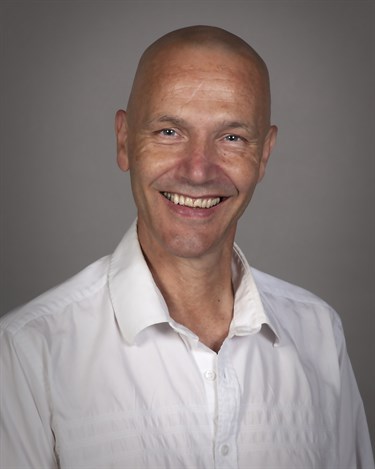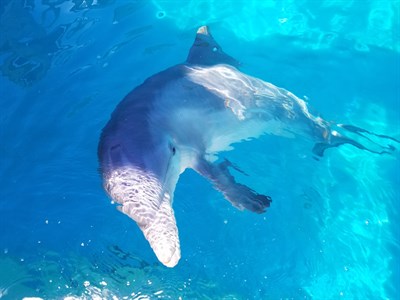Texas A&M Professor, SeaWorld Perform First Spinal Tap On Bottlenose Dolphin

A rescued bottlenose dolphin is doing well at SeaWorld San Antonio after the first cerebrospinal fluid tap on a live bottlenose dolphin was performed by a Texas A&M College of Veterinary Medicine & Biomedical Sciences (CVM) neurology professor Nick Jeffery.
The procedure has now given her a chance at living with other dolphins.
Rimmy, a sub adult female bottlenose dolphin, was stranded on Sea Rim State Park, Texas, in September 2017 when she was approximately 2-3 years old.
She was rescued by the Texas Marine Mammal Stranding Network (TMMSN) and treated for 14 months at their Galveston center for multiple ailments, including pneumonia and nasal parasites, in collaboration with SeaWorld San Antonio’s animal care team.
NOAA Fisheries determined that Rimmy could not be released back to the wild because of her need for continued, long-term medical treatment. In order to find her a permanent home a bacterial infection of the central nervous system or brain needed to be ruled out.
This kind of spinal tap procedure had never been attempted before on a live dolphin and, without it, Rimmy’s options for finding a new home were limited.
In collaboration with the TMMSN, SeaWorld brought in outside specialists for this first ever procedure, including Jeffery, who regularly performs spinal taps in animals, and Dr. James Bailey, of the Florida-based Innovative Veterinary Medicine, an expert in cetacean anesthesia who used a ventilator designed specifically for dolphins.
“It was nice to be able to contribute to this because it meant that Rimmy could go live a nice life, which she otherwise wouldn’t have been able to do,” Jeffery said.
“We do spinal taps very commonly in dogs, and while I initially thought it would be very different in dolphins—because of the shape of the skull and because the relationship of the brain to the spinal cord is completely different—since I’ve completed the procedure, I realize that it’s really straightforward to do,” he said.
SeaWorld veterinarians Dr. Jennifer Camilleri, Dr. Steve Osborn, and Dr. Hendrik Nollens, and SeaWorld’s animal husbandry team rounded out the team of experts.
During the procedure, samples were also collected to examine how the anesthetic drug was metabolized, information that can make future anesthetic procedures possible at other facilities caring for dolphins and whales.

Rimmy’s groundbreaking procedure was a success. She recovered completely from the anesthesia, and the much-needed diagnostic samples were collected. It was found that she did not have the infection of her central nervous system that had been feared and she continues to be cared for at SeaWorld San Antonio while NOAA Fisheries finds Rimmy a permanent home.
“The expertise and creativity to devise new ways to treat marine animals is a testament to the extraordinary lengths our teams will go to preserve the life of every animal,” said Dr. Steve Osborn, a senior veterinarian at SeaWorld San Antonio. “Working in collaboration with experts in the fields of neurology and anesthesia, we were able to successfully extract cerebrospinal fluid from a live cetacean for the very first time.”
SeaWorld San Antonio’s animal hospital, performing radiography, endoscopy, ultrasound, as well as small and large animal anesthesia, has given many rescued animals a second chance at life. SeaWorld’s rescue team is on call 24/7, benefiting more than 33,000 animals over the past 50 years.
###
For more information about the Texas A&M College of Veterinary Medicine & Biomedical Sciences, please visit our website at vetmed.tamu.edu or join us on Facebook, Instagram, and Twitter.
Contact Information: Megan Palsa, Executive Director of Communications, Media & Public Relations, Texas A&M College of Veterinary Medicine & Biomedical Science; mpalsa@cvm.tamu.edu; 979-862-4216; 979-421-3121 (cell)


